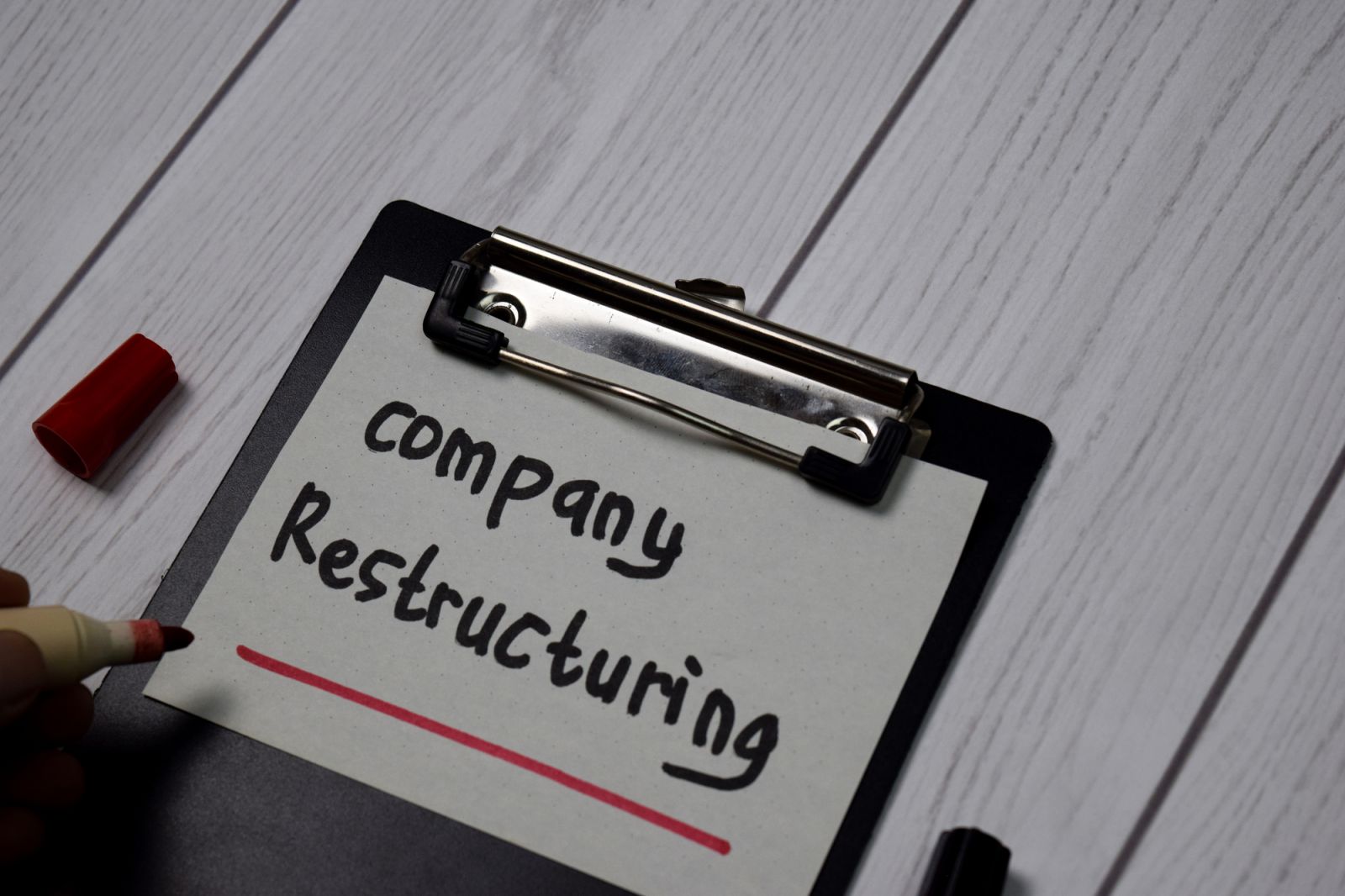THE DIFFERENT CASES OF A CORPORATE RESTRUCTURING
Restructuring a business can be done for a variety of reasons. Moreover, there is not really a definition specific to the latter. However, be aware that some cases of restructuring are either explicitly provided for in the Labor Code or recognized by case law.
With the economic crisis and other constraints, some business leaders have seen restructuring become the only solution to save their company . But what cases can lead a company to a restructuring like?
- A decrease in the means of production;
- A health crisis;
- The departure of a leader;
- The relocation of certain activities (or of the company);
- The collapse of prices;
- A strategic reorientation;
- Loss of profitability;
- Tensions in the management of human resources…
THE CONSEQUENCES OF CORPORATE RESTRUCTURING
Corporate restructurings are a big change in society. We sometimes forget, but employees are not necessarily spared in this process.
Unlike a reorganization, restructuring means redefining the economic and legal framework of the company . Being able to relate to many cases, the consequences of corporate restructuring can therefore be numerous.
The consequences of corporate restructuring
- Reorganization of means of production:
- Relocation of an activity, decrease or increase in production…
- Modification of the financial structure:
- Modification of the share capital, new shareholders…
- Change in the legal status of the company:
- Sale of activity, creation or deletion of sites or subsidiaries, business merger, etc.
- Change in payroll:
- Abolition of positions as part of a restructuring with collective redundancies…

Restructuring: contract transfers
When the corporate restructuring modifies the legal situation of the company, the manager is obliged to apply the principle of continuity of contractual relationship.
In other words, this means that the employment contracts of the old structure are transferred to the new one. And this concerns all employees of the company.
Restructuring with dismissal
Corporate restructuring is considered in different cases. And sometimes it amounts to redundancies in order to preserve the competitiveness of the company. In this case, we are talking about redundancies.
The latter may only be possible if the employer cannot reclassify the employee concerned. Or if an employee refuses to change the basic terms of their employment contract.
In the event that several employees are affected by this job reduction, all companies are obliged to define certain criteria in a collective agreement. These specify the order of dismissals that employers must follow.
Note
If a company has more than 50 employees during a dismissal of at least 10 employees within 30 consecutive days, the employer must have a job protection plan (PSE).
THE STAGES OF A CORPORATE RESTRUCTURING
For a business restructuring to be effective, it is crucial to follow all the steps correctly. It all starts with developing the restructuring strategy. This will be the basis of the restructuring plan .
Development of the restructuring strategy
When the situation of a company requires the implementation of a corporate restructuring, it is mandatory to carry out an inventory. This means defining certain points such as:
- Define the constraints present within the company;
- List the objectives to be achieved;
- The means necessary to remove all constraints;
- The method to achieve the set objectives.
All these results will be used to establish the corporate restructuring strategy. The goal is to list precisely:
- All the reorganization actions to be implemented;
- The means linked to the actions;
- The indicators for monitoring the completion of the company’s restructuring.
Consultation of the CSE on the restructuring plan
The employer must detail the reasons for the modification of the plan as well as the measures planned for the employees concerned by the modification in any written documentation necessary for the understanding of the restructuring plan.
Negotiations must take place within a reasonable time before the implementation of the restructuring plan. According to the court of cassation, it must intervene when the project is well defined, but not yet final.
THE DIFFERENT PHASES OF A CORPORATE RESTRUCTURING
Corporate restructuring is a real delicate and complex transformation. Especially when it is implemented in times of crisis and when it is the subject of costly and complicated decisions.
1) THE AWAKENING PHASE
The first step is awareness. It is a question of identifying and understanding the need for change for the company, by noting the imbalance between the structure and its environment. Once the problem has been identified, you must quickly organize an audit of the company and all of its services. This is how we prepare the company for its transition.
To succeed in this step, you need to have enough hindsight to be perfectly objective in the conclusions drawn from the audit. Difficult to perform for a person who is part of the company. Do not hesitate to be accompanied by an external person. The interim manager provides a global, rapid and impartial analysis of the company. This then makes it possible to take the appropriate measures for the restructuring.
2) THE ANNOUNCEMENT
The decisions are made, the action plan is defined, it is now a matter of announcing it. It is this stage that marks the starting point of the change process. This is why it must be given importance, both internally and externally.
Your employees may be surprised, moved, see them react violently and impose resistance. This is why communication around the restructuring is a decisive aspect of the process. It will also concern all external players such as customers, suppliers, partners, etc. It’s up to you to reassure everyone that the restructuring will bring positive benefits to the company .
3) THE DISINTEGRATION PHASE
This 3rd stage is that of the transition itself. We speak of disintegration because it is the moment when the organization is destroyed and gives way to a new form of organization . The whole structure is shaken up, and the decisions made during the development of the action plan are there to cause as little stress as possible. The disintegration comes to an end when no more markers of the old organization exist.
4) THE REBUILDING PHASE
This 4th step happens when all the changes are in place. Employees learn to make their mark in the new organization that has just been born. Very often, it’s about discovering new positions with new missions, and sometimes it’s about layoffs. Internally, this translates into either support for the new structure or rejection of it. Some adjustments may therefore still be necessary at this stage of the process, which is why the restructuring is not yet complete.
5) THE INTEGRATION PHASE
The last step marks the anchoring of the new structure in the environment. The new roots of the company are consolidated, and the actions taken from the first stage are confirmed. At that time, the management turned more than ever to the future and to the first results of this restructuring.
To conclude, the supervision of the corporate restructuring process is an essential aspect that should not be overlooked. If you want quick and effective results, hire an interim manager. Its temporary mission is to take your business from point A to point B, limiting risks and optimizing the entire operation. Reactive Executive is a firm of experts in transition management, which carries out missions of the duration of your choice to enable your company to face all types of difficulties. The important thing is to leave nothing to chance, and to remain in control of the situation, whatever the circumstances.

THE INTERLOCUTORS DURING A CORPORATE RESTRUCTURING
The elected representatives of the CSE and the trade unions
During a corporate restructuring, the elected representatives of the CSE can play a major role in developing the company’s strategy. The purpose of these is to analyze with precision the motivations as well as the methods proposed by the employer in question. These elected officials will also be present throughout the company’s transformation, in particular to support the employees concerned.
As far as the trade union organizations are concerned, they serve as interlocutors at the time of the implementation of company restructuring. They can also act on other points:
- Defend individual or collective professional interests;
- Defend the conventions as well as the collective agreements signed;
- Ensure compliance with certain conditions of the restructuring plan;
- Pay attention to the consequences for employees.












Replies to This Discussion